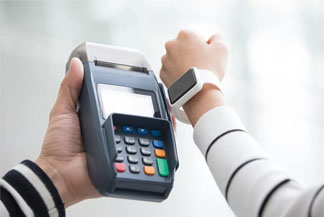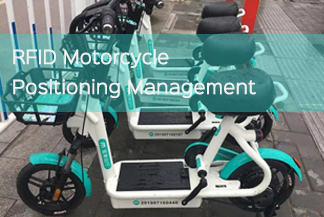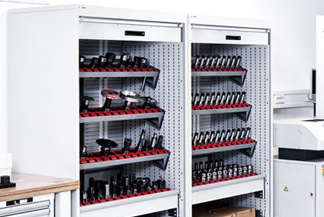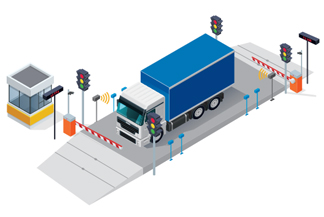 Call at :
+86 18681515767
Call at :
+86 18681515767
 Email :
marketing@jtspeedwork.com
Email :
marketing@jtspeedwork.com
 Call at :
+86 18681515767
Call at :
+86 18681515767
 Email :
marketing@jtspeedwork.com
Email :
marketing@jtspeedwork.com

RFID Journal LIVE! is the world’s largest conference and exhibition focused on radio frequency identification and related technologies. LIVE! 2023 will take place in the Orange County Convention Center in Orlando May 9-11 and will feature more than 150 exhibitors from 26 countries showcasing best-in-class RFID tags, readers, software and implementation services. Innovative new products are introduced at LIVE! each year, so you will be among the first to see the newest RFID products. RFID Journal LIVE! also features an extensive conference program with companies from retail, manufacturing, health care, logistics and other sectors presenting real-world case studies attendees can learn from. Join us in Orlando for RFID Journal LIVE! 2023. We will be at NO.406,Come to and find us. This time, the latest product RFID RADAR READER will be unveiled.

Banks and financial institutions, with all their government credibility, provide great value and convenience to end users. However, they also have problems due to their vulnerability to fraudulent attacks, such as credit card identity theft. Therefore, banks have added a lot of work in designing personal information and service experience . Whether it's two-factor authentication or OTP to protect transactions, banks and financial institutions have come a long way in protecting their customers' account information and transactions. Banks, financial institutions, and fintech companies benefit from open APIs and fintech megatrends and applications in the transformation process of RFID technology. RFID or Radio Frequency Identification is a security system that allows you to identify and track objects using electromagnetic fields. RFID technology is the mainstream choice in banking and financial institutions for identity verification, identity theft protection, biometric authentication, and more. These solutions ensure best-in-class security, helping customers keep their funds safe, while also allowing banks and financial institutions to manage their assets. In addition, RFID technology increases the productivity of banks and financial institutions through several automated processes. Enhance customer retail experience Maintaining online anonymity and accurate authentication is key to a quality bank's customer experience and identity protection. RFID technology provides biometric capabilities in banks and financial institutions, a revolutionary form of authentication that prevents customer credit card identity theft. Additionally, credit and debit cards embedded with RFID chips are useful in speeding up the retail payment experience. People no longer have to wait for the cashier to swipe their card, enter their PIN, wait for authentication to kick in, and the payment to complete. With a card embedded with an RFID chip, the end user can tap the card at the payment machine, the entire authentication process is completed in less than a second, and you can pick up your item and walk out of the store. These RFID chips guarantee the anonymity of end-user details, further preventing the risk of credit card identity theft. Thereby enhancing the user's payment experience. Multifunctional retail application RFID technology used in banks and financial institutions provides a fast and effective method of biometric authentication, in addition to this, it also makes multifunctional applications such as membership and loyalty smoother. Loyalty points received on specific transactions are effectively sent to the user's account without following any additional process. This authentication also aids in membership verification, and any points to be redeemed or membership privileges to be enjoyed can be quickly processed using this biometric authentication process. RFID technology has also opened the way for smart fitting rooms . Once a customer tries on a new shirt, th...

RFID Shared Motorcycle Identification and Parking Solution Shared electric vehicles are developed under the technology of the Internet of Things and the environment of sharing economy. With the wide application of intelligent terminal technology, it has gradually matured, combining the advantages of light weight of bicycles with the advantages of electric vehicles, which are labor-saving and long-lasting. While satisfying people's freedom of travel, it makes long-distance travel more time-saving and labor-saving. While sharing electric vehicles provides convenience, it also brings problems such as electric vehicle parking management, which plagues city managers and electric vehicle operation and maintenance personnel. How to effectively solve the problem of shared motorcycle parking has become the top priority. Solutions: In order to regulate the parking of shared electric vehicles, strengthen the supervision and management of shared electric vehicles, reduce the management cost of operation and maintenance enterprises, promote the orderly parking of shared electric bicycles, and avoid problems caused by disorderly parking of vehicles. To this end, the management scheme of RFID radio frequency identification technology adopted by Jietong Technology can effectively solve problems such as electric vehicle parking management. With the great changes in people's travel modes, from shared bicycles to shared electric vehicles have been launched in many cities. While shared electric bicycles bring convenience to users, arbitrary parking has become a problem for relevant management units. The parking of shared motorcycles blocks normal human-shaped passages, causing some safety hazards, increasing the labor of operation and maintenance management personnel, and also increasing operating costs. The technology of "RFID identification of fixed parking" has been implemented and promoted in various cities, which can reasonably prevent electric bicycles from being parked and piled up in disorder, so that customers who ride bicycles can return their bicycles in an orderly and orderly manner, which helps to reduce the management of the company. cost, and enhance the overall brand image of urban public transportation in big cities. RFID shared electric vehicle identification stationary project parking can facilitate traffic control in large cities. There are several common ways to park motorcycles on the market: Bluetooth road stud solution: the product solution has high cost, high maintenance cost, and the positioning accuracy is easily disturbed by the external environment; GPS solution: the positioning accuracy is 2-3 meters, but the shade or Buildings will block the signal, resulting in poor user experience; UHF 900MHz positioning: the reading distance is long, but the cost is relatively high, and it has been implemented; High-frequency positioning: the reading distance is short, the cost is lower, in some scenarios is implementing; According to customer deman...

RFID Linen Washing Solutions -- Hospital, Hotel, School Hospitals are faced with thousands of pieces of work clothes, clothes handover, washing, ironing, finishing, storage and other processes every year. How to effectively track and manage the washing process, washing times, inventory status and clothing effectiveness of each piece of clothing Classification etc. is a great challenge. Program Background: 1. The handover of washing tasks on paper, the procedures are complicated, and the query is difficult; 2. Worry about cross-infection, resulting in the inability to carry out the statistical work on the number of certain laundry items; 3. The washed quantity does not match the task; 4. Each step of the washing process cannot be accurately monitored, and the clothes are leaked; 5. The washed clothes are accurately classified to save storage space; 6. The minimum safety stock quantity for each item of clothing cannot be accurately arranged. The introduction of RFID technology will make the hospital's laundry management more transparent, improve work efficiency, and solve management problems that could not be achieved by other technologies in the past, such as: large-scale laundry statistics and handover. RFID linen washing management principle: Sewing RFID electronic tags on each piece of clothing, the electronic tag has a global unique identification code, that is, each piece of clothing will have a unique management identification until the clothing is scrapped (the tag can be reused, but does not exceed the service life of the tag itself) . In the entire clothing use and washing management, the use status and washing times of the clothing will be automatically recorded through the RFID reader. It supports batch reading of labels during washing handover, which makes the handover of washing tasks simple and transparent, and reduces labor costs. At the same time, by tracking the number of washings, it can estimate the service life of the current clothing for the hospital and provide forecast data for the procurement plan. The business process of RFID linen washing: 1. Linen data entry, RFID tags are sewn into clothing The chip in the tag can store data, associate the attributes of each piece of laundry to be managed with the RFID tag ID in the database, record and track the workflow and life cycle of each piece of clothing, and sew directly on the clothing to be managed. The location selection is easy to find. 2. Linen data collection and reading Linen sewn with RFID tags is packaged directly. The quantity is automatically collected by the RFID reading and writing reader, and the ID of each piece of linen that is read is recorded. Since the data is not manually counted, on the one hand, it improves work efficiency and brings convenience to the management side. 3. Counting the quantity of linen When the hospital staff is handed over, the number of handovers can be quickly handed over by configuring the handheld reader. RFID linen washing advantages...

RFID Realizes Efficient and Intelligent Management of Tools With the increasing maturity and popularization of RFID technology, tool management adopts RFID technology to realize efficient and intelligent management of tools.The RFID anti-metal electronic tag is installed on each individual tool, and the detailed information of the tool is entered to quickly provide the staff with detailed usage information, such as who has used it, where it is used, and the entry and exit of the tool. records, etc.By tracking the information of the RFID electronic tags of tools and tools, the management of tools and tools is more complete and smarter, the maintenance system management process of tools and tools is established, and the use efficiency of tools and tools is improved.RFID realizes efficient and intelligent management of tools and tools. The biggest advantage of RFID is that the identification of items does not require manual intervention, and it is easy to realize intelligent management. It belongs to non-contact and non-visual identification; the longer reading distance improves the speed of identification and realizes the rapid borrowing of tools in the tool room. It can read multiple targets at the same time, making it easy to borrow and return a large number of tools between tools, fully automated information collection, minimize human intervention, and provide good technical support for tool management to facilitate its Automatic and intelligent. At present, RFID technology, with its accurate and efficient automatic tracking management technology, can greatly reduce the cost of tool repurchase and improve production efficiency and customer satisfaction.Utilize RFID technology to easily realize automatic tool tracking, real-time tool tracking, inventory management and tool cost management. Tool Warehouse Management Workflow 1. Borrowing application: The borrower submits a tool loan application through a computer desktop application or a mobile phone APP. After the borrowing application is submitted, the tool management platform will automatically push notifications through the mobile APP, and the warehouse will give voice to the light alarm. The device reminds the warehouse administrator to receive the application in time, and the administrator goes to the information system to automatically push the message to the borrower APP or computer desktop application, and prepare the tools in advance. 2. Preparation of tools and tools: The warehouse clerk prepares the tools and tools according to the loan application, and has the following two operation methods: Method 1: The warehouse clerk collects the tools and tools at the operation counter, and reads the tool and tool information through the RFID reading and writing equipment. The tool management platform automatically compares and confirms the borrowing application, and automatically reminds whether the prepared tool matches the borrowing application; Method 2: Automatically push the model, quantit...

RFID Technology Increases Transparency of Vehicle Weighing Management Process The unattended weighing management system adopts the long-distance RFID technology to realize the automatic identification function of the weighing vehicle on the original weighing management system, and merges the automatically collected weighing vehicle information into the weighing management system. The unattended weighing management system can increase the passing speed of the vehicle by 3-4 times at the metering office. Through the automatic identification and accurate measurement of the vehicle number, it can effectively prevent the economic loss caused by human fraud to the enterprise. After the implementation of the system, the labor intensity of the staff and the error rate of manual weighing have been greatly reduced, the transparency of the management process has been improved, and the informatization process of the enterprise has been promoted. RFID technology has improved the transparency of the vehicle weighing management process . Features of RFID Vehicle Weighing System 1. Quickly and automatically identify weighing vehicle information, improve identification efficiency, and alleviate the phenomenon of vehicles queuing and weighing; 2. RFID long-distance automatic identification, accurate data, and avoid manual management loopholes; 3. RFID reader uses outdoor Waterproof design ensures long-term stable operation; 4. RFID long-distance card reader has rich data transmission interfaces, which can realize data linkage with gates, cameras, etc. Vehicle weighing management system has been an important part of information management in coal mines, garbage dumps, petroleum industry, and non-ferrous metal mines. Undoubtedly, it will provide a brand new solution for these industries and form a new weighing management mode that is efficient, accurate, fast and anti-cheating. Shenzhen Osda Electronics Co., Ltd. has launched a smart car weighing system integrating computer technology, short-range microwave communication technology, image digital processing technology, and automatic control technology to realize automatic vehicle identification and information management, improve vehicle traffic efficiency and Security, and statistics of vehicle entry and exit data, convenient for management personnel to schedule, to reduce the labor intensity of management personnel, and effectively prevent charging loopholes. The vehicle weighing management system has become an important part of the information management of many enterprises, forming a new weighing management mode that is efficient, accurate, fast and anti-cheating. The traditional vehicle management mode: the vehicle needs to be parked and registered when it arrives at the factory. After the registration is completed, it is weighed, and then the vehicle number, unit, product name and other data are manually entered into the computer, and then measured. The whole process is time-consuming and aggravating. In order...

RFID Enables Animal Husbandry to Implement More Efficient and Intelligent Management Animal husbandry combines RFID technology to realize the automation and intelligent management of animal husbandry. Especially in large farms, the number of farmed animals has been perplexing every farmer. Relying on manual counting and statistics can easily cause data inaccuracy. precise. The soft design of the rfid animal husbandry management system from traditional livestock farm management to rfid technology management reflects a process in which technology changes the state of breeding. RFID enables animal husbandry to implement more efficient and intelligent management. RFID technology is mainly used in the feeding link in animal husbandry management, including intelligent weighing, intelligent feeding, intelligent identification and inventory, animal breeding, epidemic prevention and control management, etc. The advantages of RFID technology in animal husbandry management are gradually highlighted. Many large pig, cattle and sheep farming enterprises use RFID tag technology to manage animals. In this technology, the animal tag is mainly used for wireless communication with the reader, the animal tag is worn on the animal's ear, and the tag carries the animal's identity information. The reader can identify, track and exchange the data on the animal tags, so as to automatically identify and track animals, and achieve the purpose of scientific breeding and intelligent management. 1. Intelligent weighing By installing the RFID electronic tag animal ear tag identification reader in the animal weighing channel or automatic weighing machine, when the animal passes through the weighing channel or the automatic weighing machine, the RFID reader automatically collects the ear tag information and sends it to the automatic weighing machine. The weight data is uploaded to the terminal system. Simplify the work of measuring animal weight and obtain all animal weight data at one time, so as to better adjust the feeding management strategy, and the staged evaluation of the growth of fattening pigs will also be more accurate (compared to the traditional visual evaluation method. 2. Intelligent feeding By installing the RFID electronic tag animal ear recognition reader in the feeding trough, when the animal drinks and eats, it will be identified according to the animal weight information and repeated feeding information, and the corresponding water intake and feed amount will be fed to achieve scientific feeding. Reduce unnecessary feed waste. 3. Intelligent identification and inventory Animals wear RFID electronic tag ear tags, and the RFID electronic tag ear tag identification reader is installed in the access door or in the breeding pen. When animals pass through the passage gate or feeding pen, they can be automatically counted, and the collected information can be uploaded to the terminal management background in real time for data aggregation. The RFID feeding pen and...

RFID technology solves the problem of anti-counterfeiting and anti-smuggling in the clothing industry In recent years, with the rise of various new brands in the clothing industry, the market has gradually expanded, and the popularity of the e-commerce industry has led to the closure of many well-known brand clothing stores or the cancellation of directly-operated stores. The old brand also has certain problems in the maintenance of customers. After all, in the huge market, it will not always be a clear stream of regular sales, and fake goods and fake goods are not uncommon. If you were a business owner, what would you do? In fact, it is completely possible to solve the problem of anti-counterfeiting and anti-smuggling through RFID technology, and apply RFID electronic tags to clothing. The RFID tag chip can collect and store information, record sales trends, and quickly view sales trends for that product. At the same time, the code of the RFID tag is the only code in the world, which can effectively solve the problem of anti-counterfeiting and anti-channeling of enterprises! Easy and fast reading: data reading does not require a light source and can even be carried out through the outer packaging. When using a passive tag without its own battery, the effective identification distance can reach 1-8 meters; Fast recognition speed: as soon as the electronic tag enters the magnetic field or electromagnetic wave emission range, the UHF reader can immediately read the information in it, and can process multiple tags at the same time to realize batch identification; Large data capacity: The two-dimensional barcode with the largest data capacity can only store up to 2725 numbers; if it contains letters, the storage capacity is small; RFID tags can be expanded to 1K according to user needs; Long service life and wide application range: its radio communication method enables it to be used in highly polluted environments such as dust and oil pollution and radioactive environments, and its closed packaging makes its service life much longer than that of printed barcodes; Tag data can be dynamically changed: the data can be changed to be written using the programmer, giving the RFID label the function of an interactive portable data file, and the writing time is less than that of printing a barcode; Better safety: Not only passive tags with their own batteries, but also passive tags with their own batteries can be used. The rapid development of the market economy has promoted the diversity and richness of market products, satisfying the growing consumption of consumers. need. But at the same time, the problem is becoming more and more obvious. The large number of counterfeit and counterfeit products has seriously affected the interests of consumers and businesses. Branded apparel companies are constantly looking for new ways to promote and protect their brands and products. Because of its special technology, RFID gradually shows its practical value and perfe...
Categories
New Products
JT-6210 0-1m UHF RFID Desktop USB Reader Writer ISO18000-6C Read More
JT-7100 0-3m 860-960MHz UHF RFID Industrial Grade RFID Reader Read More
JT-8380 0-6m UHF RFID 860-960MHz Middle Range Integrated Reader Read More
JT-P983 Industrial Tablet Pad RFID Handheld Reader Grade Long Range Android UHF Terminal Bluetooth RFID Reader For Warehouse Read More
JT-1550 Small Mini HF RFID 13.56MHz Module ISO14443A ISO 15693 Protocol Read More
JT-2302A 13.56MHz RFID Module ISO14443A ISO15693 Protocol Read More
JT-2302 HF RFID 13.56MHz Module ISO14443A ISO15693 Support Mifare1 IC card Read More
JT-2540 TM200 UHF RFID 4-port Module 860-960MHz TTL Read More
Copyright © 2025 Shenzhen Jietong Technology Co.,Ltd. All Rights Reserved.

IPv6 network supported